In AP Biology, understanding how genotype affects phenotype is crucial. The genotype, composed of DNA sequences, dictates the genetic instructions for an organism’s traits. Through transcription and translation, RNA helps convert these genetic instructions into proteins, leading to the expression of observable characteristics, or phenotypes. This process reveals the intricate relationship between DNA and RNA in determining an organism’s physical and biochemical attributes.
Learning Objectives
By studying how genotype affects phenotype, you will understand the role of chromosomes in carrying genetic information and how chloroplast genes can influence traits. You will learn how different genetic mechanisms, including incomplete dominance, affect observable characteristics. Additionally, you will explore how these genetic factors interact to produce diverse phenotypes, gaining insight into the complexity of inheritance and expression of traits.
Genotype
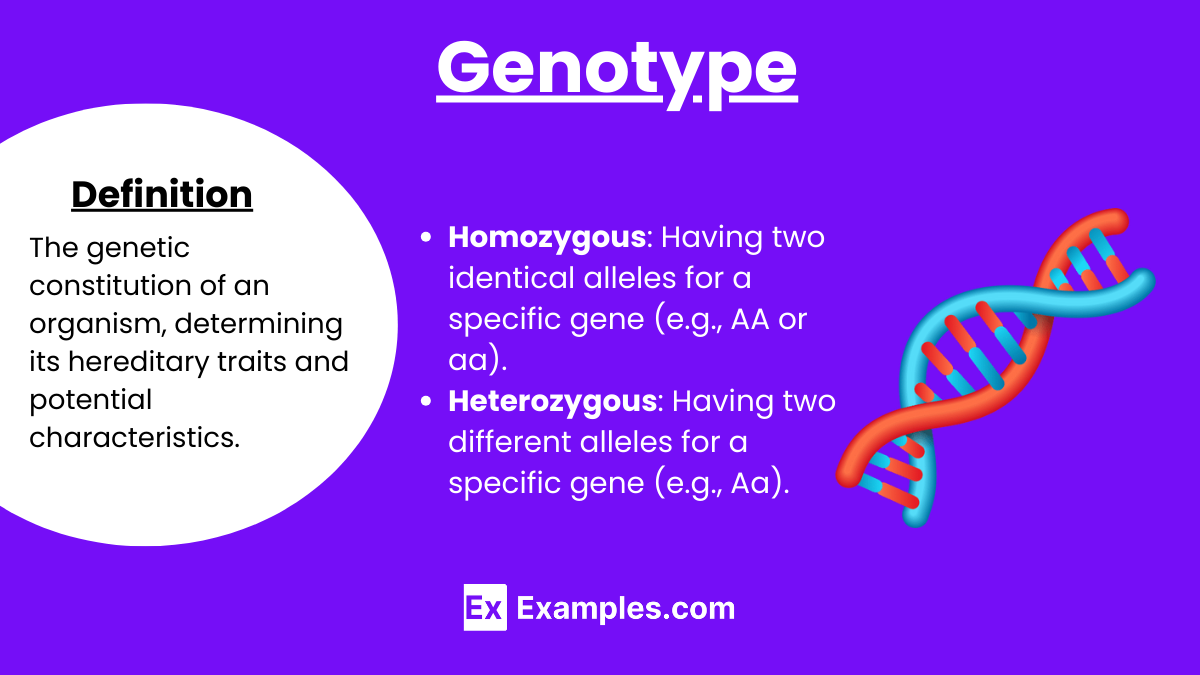
- Definition: The genetic constitution of an organism, encompassing all the alleles inherited from both parents.
- Homozygous: Having two identical alleles for a specific gene (e.g., AA or aa).
- Heterozygous: Having two different alleles for a specific gene (e.g., Aa).
Phenotype

- Definition: The observable traits or characteristics of an organism, such as morphology, development, biochemical properties, and behavior.
- Influence: Determined by the genotype and environmental factors.
Mendelian Genetics
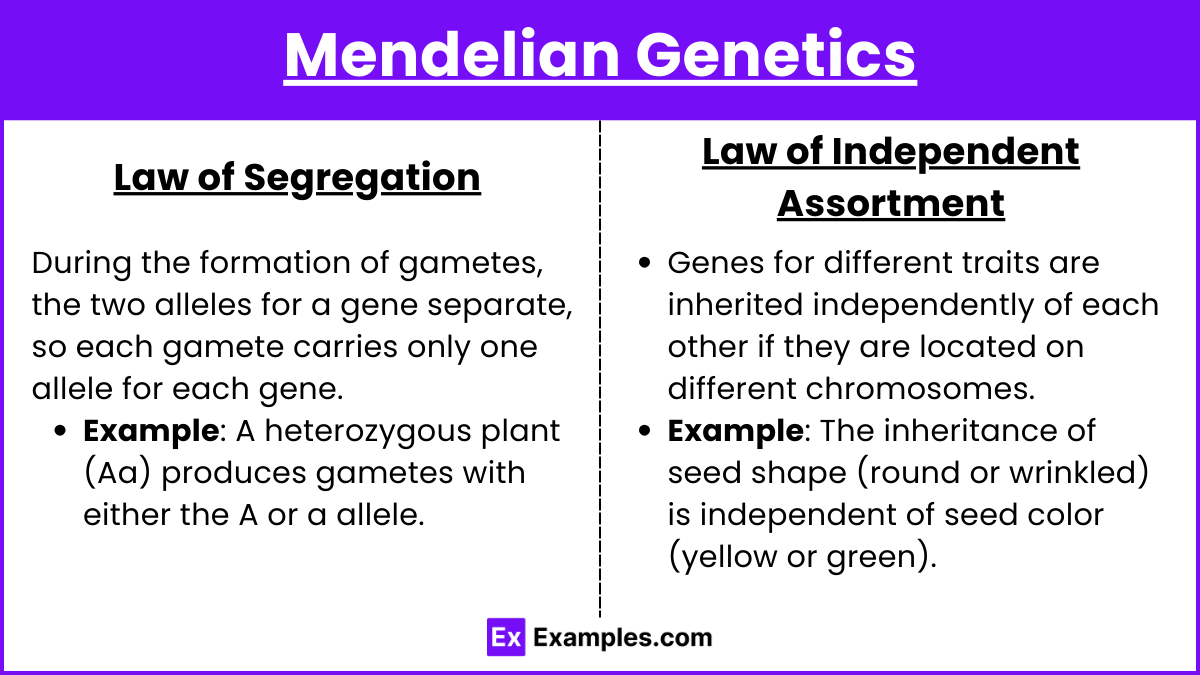
Law of Segregation
- Description: During the formation of gametes, the two alleles for a gene separate, so each gamete carries only one allele for each gene.
- Example: A heterozygous plant (Aa) produces gametes with either the A or a allele.
Law of Independent Assortment
- Description: Genes for different traits are inherited independently of each other if they are located on different chromosomes.
- Example: The inheritance of seed shape (round or wrinkled) is independent of seed color (yellow or green).
Types of Dominance
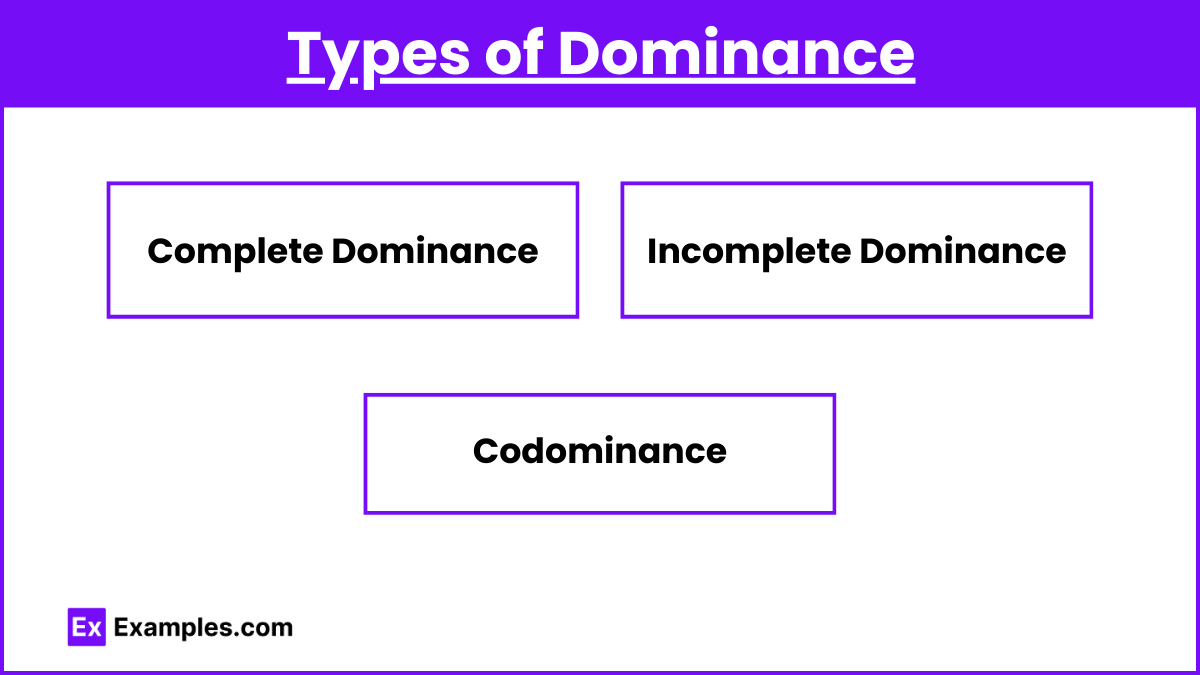
Complete Dominance
- Description: The dominant allele completely masks the effect of the recessive allele in heterozygous individuals.
- Example: In pea plants, the allele for tall (T) is dominant over the allele for short (t), so Tt individuals are tall.
Incomplete Dominance
- Description: The phenotype of heterozygous individuals is an intermediate blend of the phenotypes of the homozygous parents.
- Example: In snapdragons, a cross between red-flowered (RR) and white-flowered (rr) plants produces pink-flowered (Rr) offspring.
Codominance
- Description: Both alleles in a heterozygous individual contribute equally and visibly to the phenotype.
- Example: In human blood types, individuals with IAIB genotype have both A and B antigens on their red blood cells.
Polygenic Inheritance
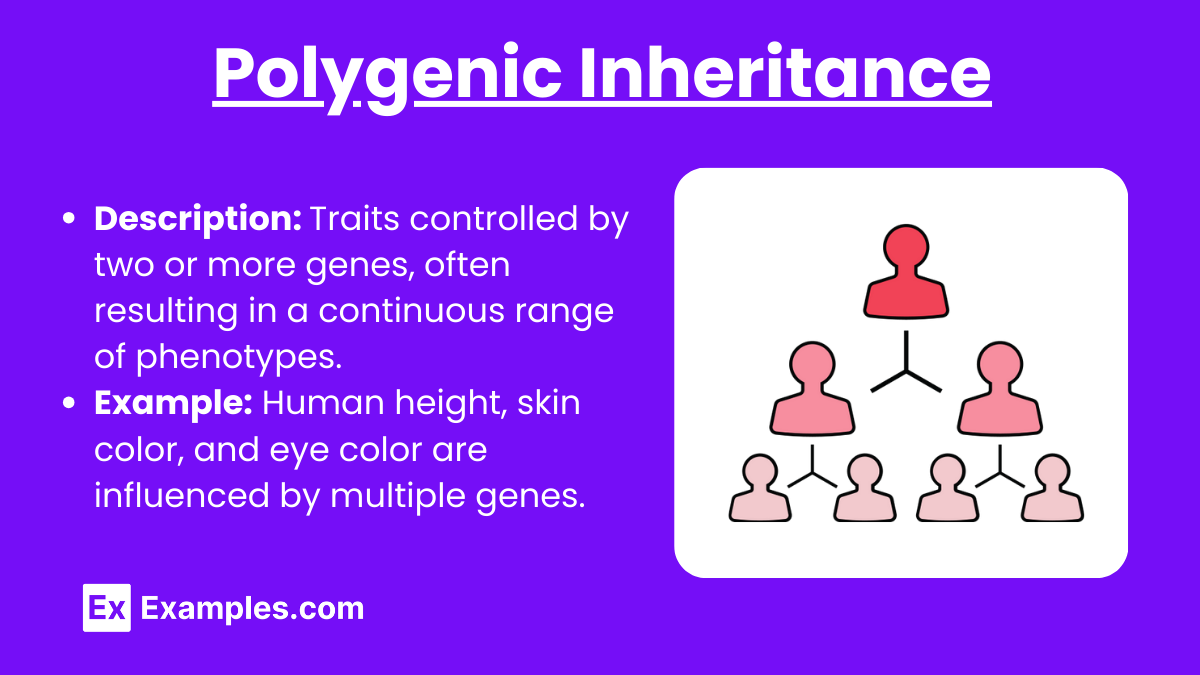
- Description: Traits controlled by two or more genes, often resulting in a continuous range of phenotypes.
- Example: Human height, skin color, and eye color are influenced by multiple genes.
Environmental Influence on Phenotype
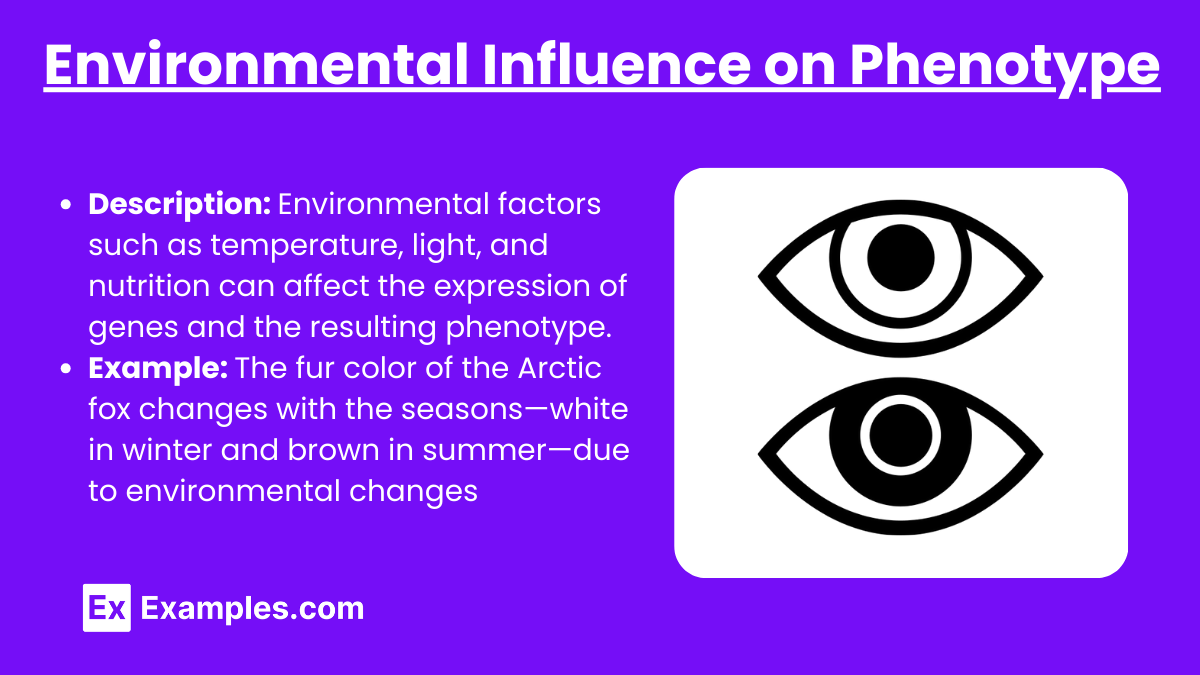
- Description: Environmental factors such as temperature, light, and nutrition can affect the expression of genes and the resulting phenotype.
- Example: The fur color of the Arctic fox changes with the seasons—white in winter and brown in summer—due to environmental changes.
Epistasis

- Description: One gene can mask or modify the expression of another gene.
- Example: In Labrador retrievers, the E gene determines whether pigment will be deposited in the fur. If an individual has two recessive alleles (ee), the fur will be yellow regardless of the B gene alleles for black or brown fur.
Pleiotropy
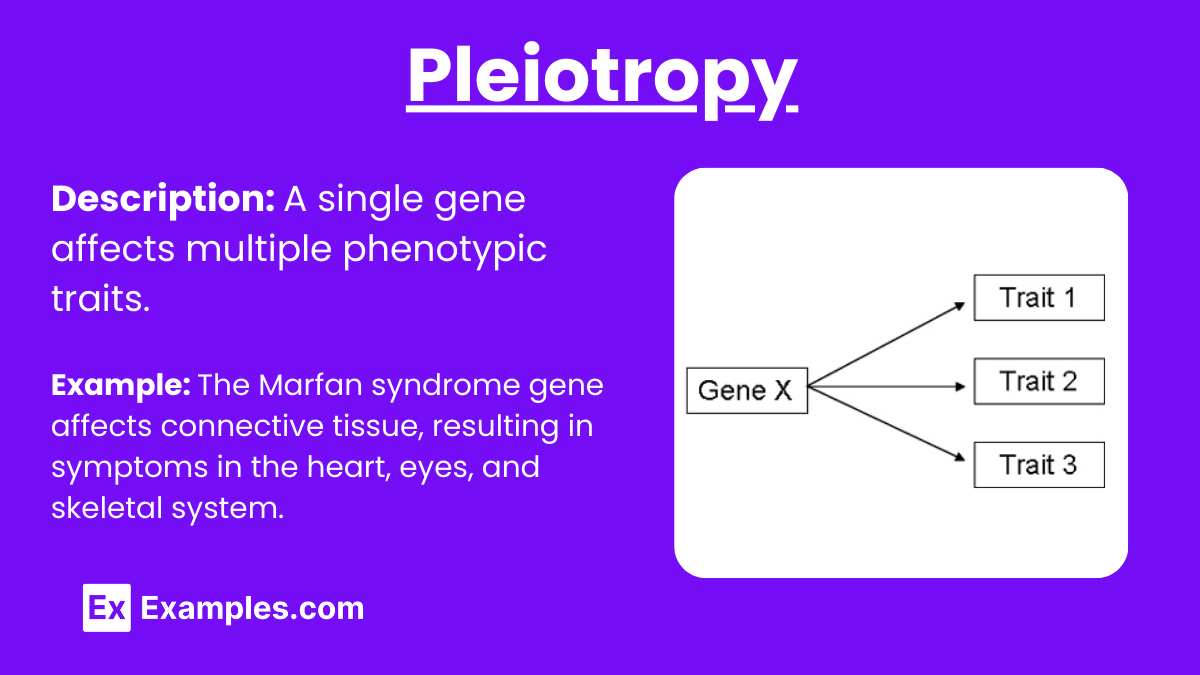
- Description: A single gene affects multiple phenotypic traits.
- Example: The Marfan syndrome gene affects connective tissue, resulting in symptoms in the heart, eyes, and skeletal system.
Genotype-Environment Interaction
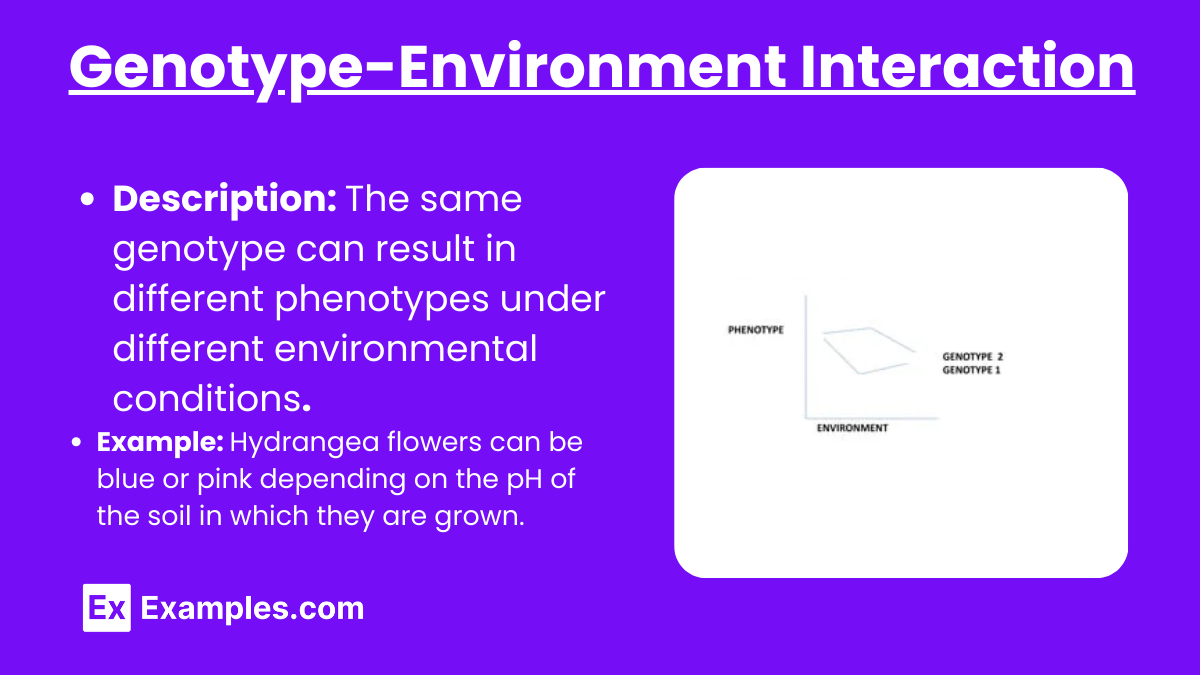
- Description: The same genotype can result in different phenotypes under different environmental conditions.
- Example: Hydrangea flowers can be blue or pink depending on the pH of the soil in which they are grown.
Pedigree Analysis
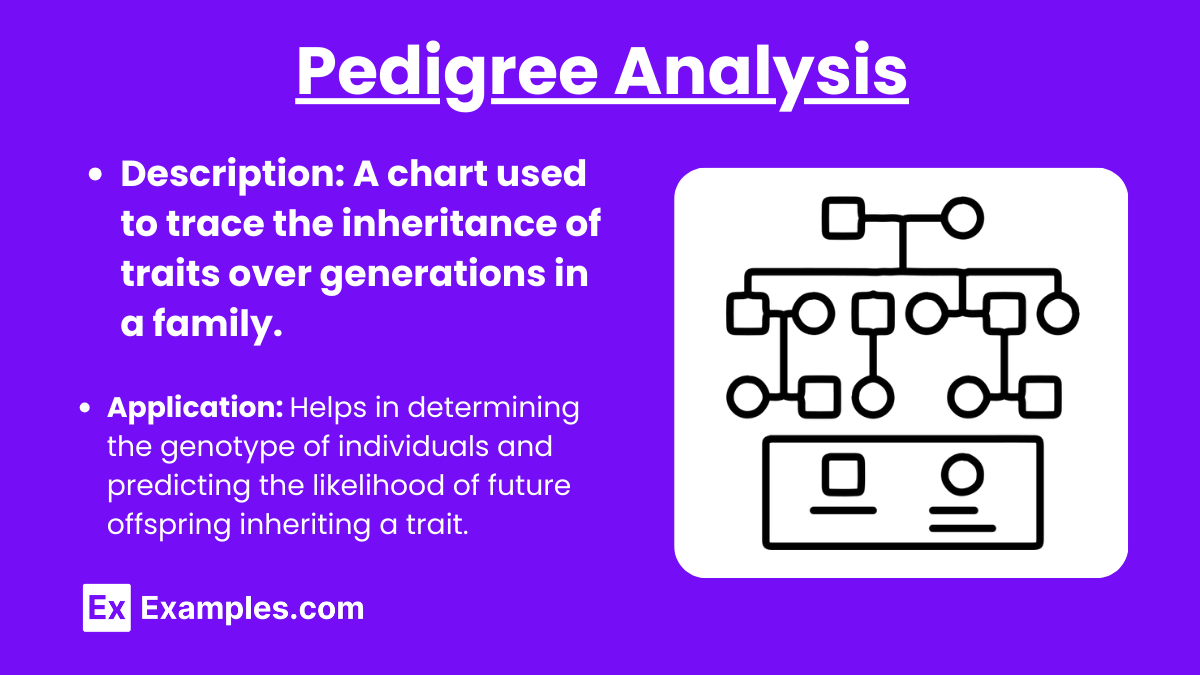
- Description: A chart used to trace the inheritance of traits over generations in a family.
- Application: Helps in determining the genotype of individuals and predicting the likelihood of future offspring inheriting a trait.
Genomic Imprinting
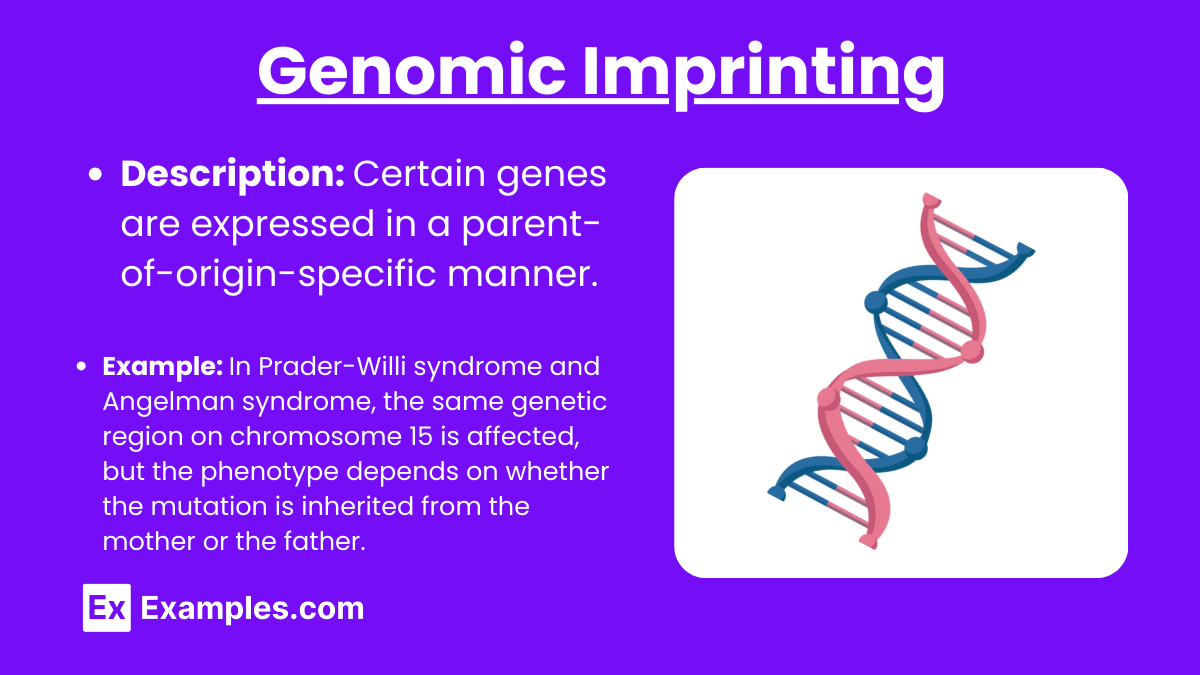
- Description: Certain genes are expressed in a parent-of-origin-specific manner.
- Example: In Prader-Willi syndrome and Angelman syndrome, the same genetic region on chromosome 15 is affected, but the phenotype depends on whether the mutation is inherited from the mother or the father.
Examples
Example 1: Mendelian Inheritance
- Scenario: Pea plants have a gene for flower color, with purple (P) being dominant over white (p).
- Genotype to Phenotype: Plants with genotypes PP and Pp have purple flowers, while pp plants have white flowers.
Example 2: Incomplete Dominance
- Scenario: Snapdragons show incomplete dominance for flower color, with red (RR), white (rr), and pink (Rr) flowers.
- Genotype to Phenotype: Heterozygous Rr plants have pink flowers, an intermediate phenotype between red and white.
Example 3: Codominance
- Scenario: Human blood types, where IA and IB alleles are codominant.
- Genotype to Phenotype: Individuals with genotype IAIB have both A and B antigens on their red blood cells, resulting in AB blood type.
Example 4: Polygenic Inheritance
- Scenario: Human skin color is influenced by multiple genes.
- Genotype to Phenotype: The interaction of several genes produces a range of skin colors.
Example 5: Environmental Influence
- Scenario: The fur color of Himalayan rabbits is temperature-dependent.
- Genotype to Phenotype: Rabbits have a genotype that produces dark fur on cooler body parts and light fur on warmer body parts due to temperature-sensitive enzyme activity.
Practice Questions and Answers
Question 1
Explain how incomplete dominance affects the phenotype of heterozygous individuals.
A. It results in a phenotype identical to one of the homozygous parents.
B. It results in a phenotype that is an intermediate between the phenotypes of the homozygous parents.
C. It results in both alleles being fully expressed simultaneously.
D. It results in the recessive allele being completely masked.
Answer: B. It results in a phenotype that is an intermediate between the phenotypes of the homozygous parents.
Description: Incomplete dominance results in a phenotype that is intermediate between the phenotypes of the homozygous parents. For example, in snapdragons, the flower color shows incomplete dominance. Homozygous red flowers (RR) crossed with homozygous white flowers (rr) produce heterozygous pink flowers (Rr), demonstrating an intermediate phenotype.
Question 2
How does codominance differ from complete dominance?
A. Codominance results in a phenotype identical to one of the homozygous parents.
B. Codominance results in a blend of both alleles in the phenotype.
C. Codominance occurs when both alleles in a heterozygous individual contribute equally and visibly to the phenotype.
D. Codominance results in the recessive allele being completely masked.
Answer: C. Codominance occurs when both alleles in a heterozygous individual contribute equally and visibly to the phenotype.
Description: Codominance occurs when both alleles in a heterozygous individual contribute equally and visibly to the phenotype, unlike complete dominance where the dominant allele masks the effect of the recessive allele. In human blood types, the IA and IB alleles are codominant. Individuals with genotype IAIB express both A and B antigens on their red blood cells, resulting in AB blood type.
Question 3
Describe how environmental factors can influence phenotype with an example.
A. Environmental factors do not affect gene expression.
B. Environmental factors can only enhance the dominant allele’s effect.
C. Environmental factors can affect the expression of genes, influencing the phenotype.
D. Environmental factors can only affect recessive genes.
Answer: C. Environmental factors can affect the expression of genes, influencing the phenotype.
Description: Environmental factors can affect the expression of genes, influencing the phenotype. For instance, the fur color of Himalayan rabbits is influenced by temperature. Their genotype produces an enzyme that is active at cooler temperatures, leading to dark fur on cooler body parts (ears, nose, feet) and light fur on warmer body parts, demonstrating the interaction between genotype and environment.


